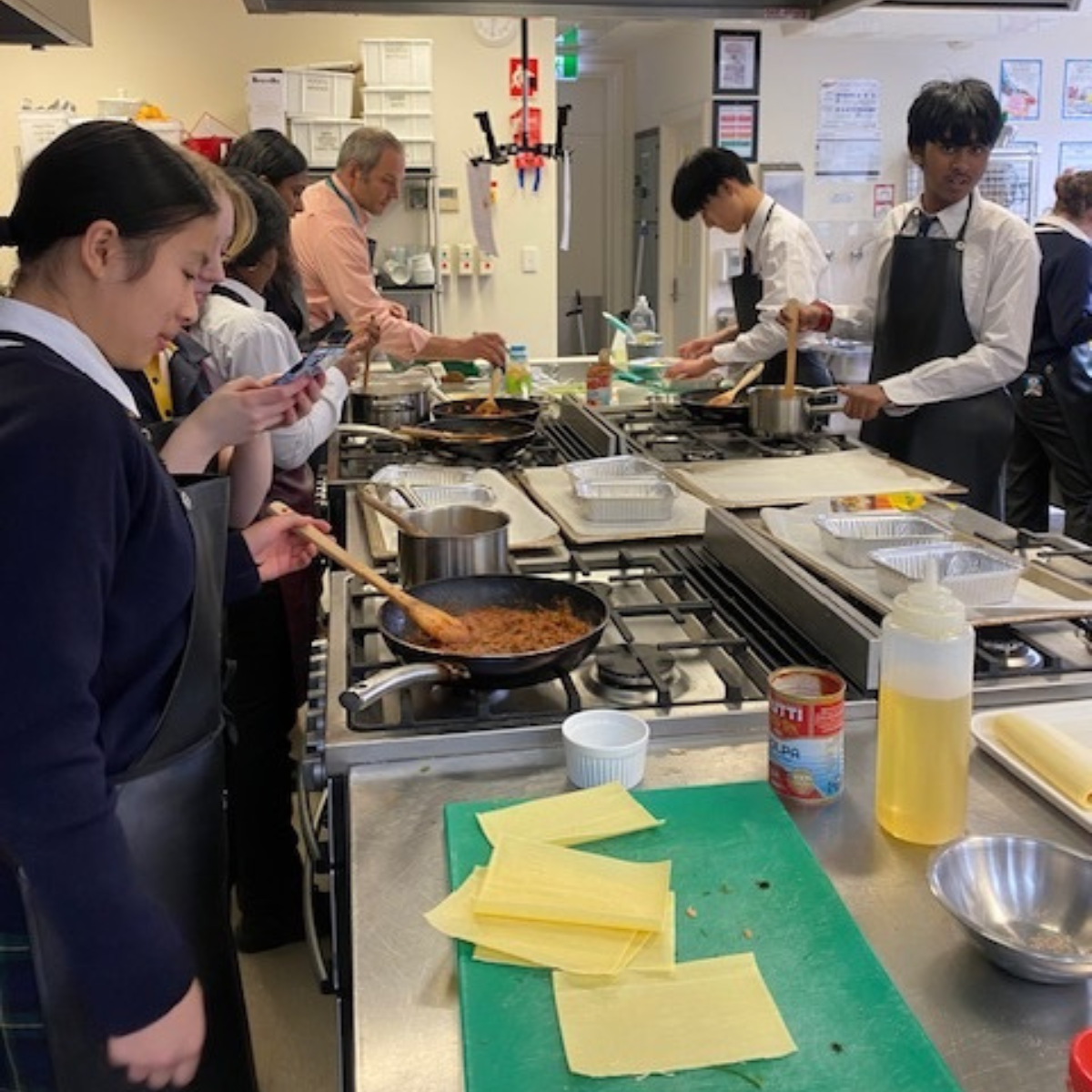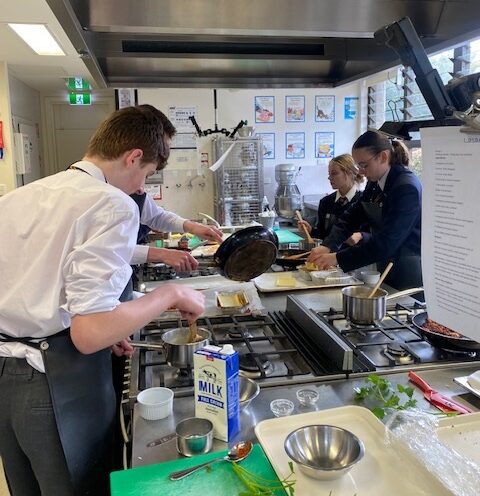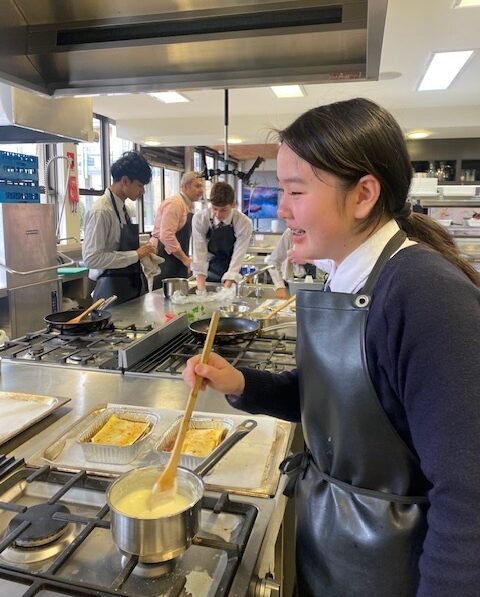
Layers of Learning: Our Lasagne Journey
At The Knox School (TKS), learning doesn’t stop at the classroom door. Our approach is to take knowledge and apply it in the real world, giving students opportunities to see, touch and experience concepts in action. Whether through outdoor education, community engagement or hands-on projects, TKS students discover that learning can happen anywhere.
Food Studies is one of the many places where this philosophy comes to life. Here, recipes become pathways to science, creativity and teamwork. Recently, our students put theory into practice by making lasagne from scratch. Along the way, they explored the chemistry behind each stage, discovering how cooking techniques transform flavour, texture and nutrition.

Two of our students shared their reflections on the experience:
“On Monday, our food studies class made some tasty lasagne. But this lesson wasn’t just about cooking, it was about exploring the food science that makes every bite taste amazing. From browning mince to melting cheese, we discovered how chemistry and cooking go hand in hand.
“We started by browning the mince. This triggered the Maillard reaction, where proteins and sugars reacted to create a rich, savoury flavour and brown colour. We also learned about protein denaturation, which happens when heat changes the structure of proteins, making the meat firm and safe to eat.
“Next, we prepared a roux for the cheese sauce. As the flour cooked, gelatinisation occurred, thickening the sauce when starch granules absorbed liquid. A little browning of the flour also showed dextrinisation, which gave a subtle nutty flavour. When we added cheese, protein coagulation took place, helping the sauce set into a smooth, creamy consistency.
“We carefully layered pasta sheets, meat sauce, and cheese sauce. This layering created both structure and texture, ensuring that every slice had a balanced combination of flavours and a firm shape when cut.
“Finally, we baked the lasagne in the oven. On the surface, the cheese topping went golden brown thanks to caramelisation of sugars and the Maillard reaction. This gave the dish its crispy, mouth-watering finish.”
– Prabhav Giridhar Ram Prasad

Oscar reflected on the teamwork and challenges of the lesson:
“I really enjoyed working with my friends to create the lasagne. Watching the science unfold in front of us made the cooking experience even more interesting. The most challenging part for me was making sure the cheese sauce didn’t go lumpy, but with careful stirring it came together well. Next time, I’d like to try adding some herbs to the meat sauce to give it even more depth of flavour. Overall, this was a fun and tasty learning experience, and I’d definitely make this dish again at home.
“Fun fact: Did you know the Maillard reaction is also what makes toast golden brown and steak taste so good?”
– Oscar Collins

Through this delicious experiment, our students saw firsthand how science is everywhere, even in the kitchen. From the Maillard reaction that browns meat and cheese, to gelatinisation thickening a sauce, Food Studies continues to spark curiosity, resilience and creativity in our learners.
